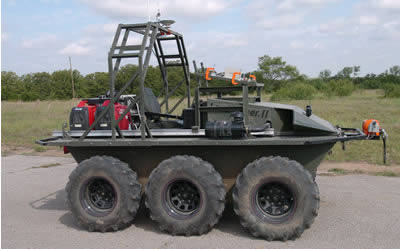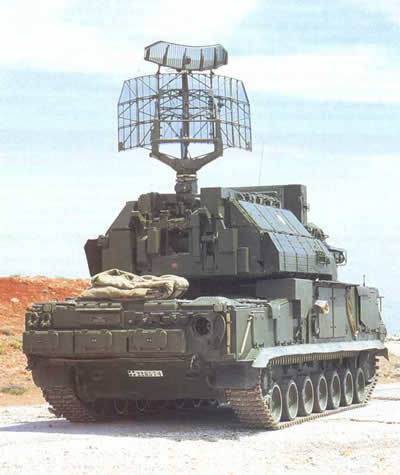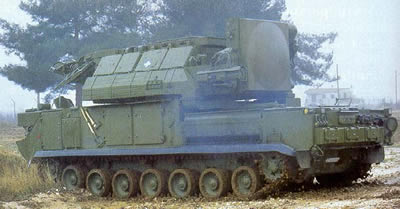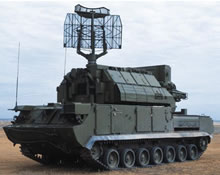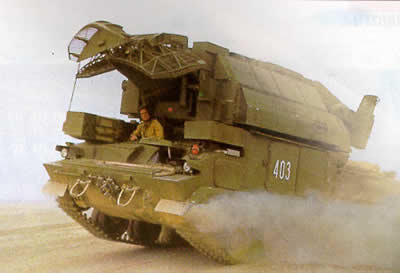Both Israel and Gaza are a “perfect laboratory” for studying Post-Traumatic Stress Disorder (PTSD) and other anxiety related ailments. The level of chronic anxiety here is so great and so constant that it seems the ideal place for research on cognitive therapy. Unfortunately, only in Israel has there been a substantially organized effort to study these phenomena in an orderly fashion and several trauma researches have recently become available to the public.
Trauma is no stranger to the Israeli psyche. It has been present here for nearly sixty years.
Although the Second Lebanon War is now already a memory of the past, the emotional and psychological wounds of thousands of Israelis are quite vivid and have yet to heal. In addition to the traumas experienced by Israelis during the Second Lebanon War, the security crisis in Sderot and communities surrounding Gaza have had a tremendous impact on the mental health of thousands of Israelis residing in the southern regions of Israel. Often the symptoms of trauma and Post Traumatic Stress Disorder appear suddenly, severely hindering every aspect of the individuals’ life. Many of the children and families suffering from PTSD in Sderot are not receiving any treatment simply because they fear leaving their homes and being struck by a Qassam rocket.
 As part of a solution, NATAL the local trauma center, has initiated a “Mobile Unit”, composed of 5 mental health professionals who make home visitations to families in distress. For over seven years now the community of Sderot and those surrounding the Gaza Strip have been forced to contend with ongoing acts of violence and numerous traumas. From the ongoing barrage of Qassam rockets to economic instability, southern residents have faced their own unique crisis’s which has drastically impacted the mental health of thousands. Additionally, many of the residents in the south feel abandon by the state and the general public as terrorist attacks in the center of the country and the Second Lebanon War often times overshadowed the security crisis in the south. With no end of violence in sight, residents have had no choice but to live in a constant state of stress, isolation, uncertainty and fear.
As part of a solution, NATAL the local trauma center, has initiated a “Mobile Unit”, composed of 5 mental health professionals who make home visitations to families in distress. For over seven years now the community of Sderot and those surrounding the Gaza Strip have been forced to contend with ongoing acts of violence and numerous traumas. From the ongoing barrage of Qassam rockets to economic instability, southern residents have faced their own unique crisis’s which has drastically impacted the mental health of thousands. Additionally, many of the residents in the south feel abandon by the state and the general public as terrorist attacks in the center of the country and the Second Lebanon War often times overshadowed the security crisis in the south. With no end of violence in sight, residents have had no choice but to live in a constant state of stress, isolation, uncertainty and fear.
Dr. Adriana Katz, 59, is the director of Sderot’s mental health center, where she has worked for 12 years, and directs a newly established clinic called “Hosen Nafshi” (mental fortitude).The city’s mental health clinic is treating some 1,000 trauma victims – out of the city’s 24,000 residents – and figures are rising daily. Dr Katz believes there are more victims, but many are ashamed to seek help. A study conducted by Tel Hai College has found that at least one-third (!!) of the children in the Negev town of Sderot suffer from Post-Traumatic Stress Disorder (PTSD).
 Only handful kilometers to the West, a similar tragedy is unfolding in the Gaza Strip. Here children are suffering equally from traumatic symptoms. The street fighting in Gaza, where Hamas and Fatah gunmen are firing indiscriminately at each other, is keeping children cooped up in their squalid homes for days and weeks. It doesn’t take an air strike, or a telephoned warning that Israeli bombers are on the way, to terrify the war-weary children of Gaza. Heightened surveillance is enough to cause nightmares. Incessant shooting, Israeli jetfighter ultra-sound booms and just ordinary noise from firing Qassam and Israeli bombing, are sufficient sources of constant fear. In Gaza’s grim conditions, mothers find it hard to tell if their offspring are crying out of fright, pain or misery. But when normally bickering brats fall silent, it’s the first sign of mental scars from being scared, traumatized and frightened. Post Traumatic Stress Disorder (PTSD) is common here. One survey found almost of a third of Gazan children suffering from a severe form of this condition. These figures make it clear that a typical childhood in Gaza included witnessing or experiencing the violent events associated with this particularly deadly conflict.
Only handful kilometers to the West, a similar tragedy is unfolding in the Gaza Strip. Here children are suffering equally from traumatic symptoms. The street fighting in Gaza, where Hamas and Fatah gunmen are firing indiscriminately at each other, is keeping children cooped up in their squalid homes for days and weeks. It doesn’t take an air strike, or a telephoned warning that Israeli bombers are on the way, to terrify the war-weary children of Gaza. Heightened surveillance is enough to cause nightmares. Incessant shooting, Israeli jetfighter ultra-sound booms and just ordinary noise from firing Qassam and Israeli bombing, are sufficient sources of constant fear. In Gaza’s grim conditions, mothers find it hard to tell if their offspring are crying out of fright, pain or misery. But when normally bickering brats fall silent, it’s the first sign of mental scars from being scared, traumatized and frightened. Post Traumatic Stress Disorder (PTSD) is common here. One survey found almost of a third of Gazan children suffering from a severe form of this condition. These figures make it clear that a typical childhood in Gaza included witnessing or experiencing the violent events associated with this particularly deadly conflict.
.
The problem is, that in Gaza there is little help, as no organized trauma centers are available to mitigate the suffering. Both Gaza and Sderot, only a stone throw apart, are two separate worlds, each engulfed in its own suffering and misery- but both are unfortunate victims of political bickering and cynical indifference by their respective leaders.
Israel 2000-2007: Normal People Living in an Abnormal Situation
The Israeli experience in PTSD occurring after suicide terror and massive rocket attacks, is second to none in the world, and academics name Israel as the ” world’s perfect laboratory” for PTSD studies, a rather dubious portrayal, which most Israelis would like to erase permanently from their agenda. According to Professor Arieh Shalev, chief of psychiatry at Hadassah-University Hospital Jerusalem, disasters can take many forms, all demanding rapid response by experienced emergency rescue teams.
When such incidents are isolated, or infrequent, most people recover from the traumatic events quite rapidly. The same applies in principle, when an entire population is under a continuous war situation. For example could serve, the psychological stamina of the people of London during the 1940 Blitz, or the DESERT STORM Scud attacks on Israel in 1991, or even, to some extent, the horrendous carnage on 9/11 in 2001. While the stress was significant during the actual attack period, most of the psychological symptoms evaporated quite quickly and life resumed its normality.
But in Israel, since the year 2000, and especially during the notoriously 2002-2005 incessant suicide terrorist attacks, the situation became highly critical.
Palestinian suicide attacks during that period took an almost daily toll in civilian life. Israel’s towns became frontline to acts of brutal and indiscriminate terrorism- nearly a thousand Israelis lost their life during that terrifying time, thousand became severely mutilated, even more suffered mental disorders hitherto virtually unknown. Only the people of Baghdad must still share this kind of daily horror.
While, under attack, most of the population, not directly affected by traumatic events, remains quite resilient and hardens to the daily threats and trying at best to continue their daily routine, the first response emergency workers are undergoing a growing emotional change, enhanced by protracted exposure to catastrophic events, some which are beyond human perception even to seasoned veterans in this grueling trade.
 Understanding the Symptoms of PTSD
Understanding the Symptoms of PTSD
Most Israeli researchers distinguish between the acute symptoms that trauma victims experience immediately after the event ( Acute Stress Disorder), and chronic Post -Traumatic Disorder (PTSD), which is considered a disease that can only be diagnosed about four months after the actual incident. Professor Arieh Shalev ran MRI brain scans on people exposed to traumatic events one week after the incident and then six months later. At first, things appeared normal, but as time progressed he found there was more activity in the brain’s centers. As memories have more impact on the brain, people become socially regressive and lose interest in their surroundings.
Israeli researchers thus appear to be reaching the understanding that the first period of time after a traumatic event is a window of opportunity, in which the human system is still open to professional intervention, and sufficiently sensitive to change and the damage is reversible.
According to Professor Shmuel Shapira, Deputy Director General of the Jerusalem Hadassah University Hospitals, the medical term “lightly wounded” is not a scientific definition. It generally means that there is no immediate danger to life and limb in the patient’s body. But the damage to the soul, by severe shock, must be regarded far from “light”.
To heal those may require weeks of treatment in hospitals, or specialist mental institutions, months of careful rehabilitation to restore some sort of normal lifestyle routine. Some of these effects may never heal completely. The psychological trauma may be even more devastating than wounds, says, Professor Shapira, and in worst cases can lead to chronic unemployment, divorce and sometimes even suicide, others may even be mentally handicapped for life.
Dr Batya Ludman, an Israeli psychologist specializing in trauma explained that people associated with a one-time terror attack, can usually cope with the traumatic experience and return to normal routine after reasonable time, with or even without mental assistance. However, Dr Ludman warned, that the problem she observed in Israel during the height of the Intifada years, was that people did not have the time to recover from one terror attack, before the next one hit. In fact, this is currently the situation in Sderot, where Qassam alert is occurring day and night without respite.
The Grueling Job of Israeli First Responder Services

On a visit to the United States a few years ago, Israeli Emergency Medical Services (EMS) workers, provided first hand insight into the violence that they have witnessed as some first responder emergency units to arrive at the scene of the horrifying carnage. Being first on the scene, only minutes after an explosion, is a terrifying experience even to the staunchest veterans of wars. The MDA workers, many of which are volunteers are an indispensable part of the Israeli Emergency Rescue Services, which apart from the EMS include special security elements, Police Forensic Units, Bomb Disposal Experts, so-called “Body handlers” and, as of late highly trained mental assistance paramedics. Usually among the first on the scene, checking between bloody limbs and blown-up body parts for additional bombs, the men shut off their minds to the mortal scene they are facing up to. “You don’t have time to think about the danger of unexploded ordnance. As soon as you are faced with the real event, a switch goes off in your head and you shift into s different gear” says 28 year old Rami, a veteran BDS member who has seen it all and survived.
But the most harrowing job of all is the task of the special Israeli volunteer organization Chesed Shel Emet (True Mercy) also known officially as Zaka (“Identification of Victims of Disaster”).
These are ultra-orthodox Jews, wearing the black kippot (scull caps) and Tzitzit (a four cornered garment) and are identified on duty by their distinctive fluorescent orange emergency vests. Their task is to search and collect limbs and scrape down buildings splattered with blood and strips of flesh blown away by the blast of the explosion. While the other rescue teams work feverishly to recover the wounded and evacuate them as quickly as possible, police forensic experts try to identify the corpses- Zaka members, are carefully tending to the ancient Jewish ritual of giving the dead a proper burial.
According to this law, the entire corps should be buried on the day of death, if possible. However, as the explosion usually blows body parts wide apart, such a task is not only a traumatic experience to the Zaka volunteers, but in many cases, when secondary explosions cause catastrophic fire, this becomes almost impossible, as bodies are burned to cinders. In the laconic professional designation, Zaka men are termed as ” Body Handlers”, which is rather a thin understatement of the highly sensitive and almost inhuman demand on their psychological stamina, which only their devout adherence to the Jewish Halacha law can support.
But there are times, when Zaka men could even save limbs and rush them to hospitals in time for re-attachment, especially if the victims were children, this gives some brightness to a otherwise somber task, they say. How these men function at all, under those conditions, can best be explained in the words of Zaka founder, Rabbi Elazar Gelbstein: ” It’s something that you can never prepare yourself emotionally” he says, ” When we arrive at the scene, we reprogram ourselves and work in a trance. If we stopped to think about what we are doing, we’d become paralyzed”. The selection process for Zaka volunteers is difficult for many who enlist. Some cannot even take the training films projected, showing footage of bombings too shocking even to the most vivid horror movies, others drop out after the first encounter.
But those who go on with this grisly work are certainly of a special breed, which have already gained public admiration, by the secular Israeli society, which traditionally regards the ultra-religious Haredim community as draft dodgers and national outcasts. In fact, Zaka has already gained international recognition in 2001, when the United Nations named it as Israeli volunteer organization of the year.
But this work has its price. Among the most severe cases of Post- Traumatic Stress Disorders are the Zaka volunteers. The horror of the job tending for mutilated terror victims is taking its constant toll among those dedicated men. Rony Berger, a clinical psychologist with Israel’s largest trauma center, said, “with so much stress on such a regular basis, many of those who are first on the scene are suffering from ‘burn-out’.” Professor Shalev found that disaster workers with high blood pressure that does not decline over the first hours or days, are the highest risk samples for chronic PTSD, in other words, they suffer from complete burn-out and are no longer fit to work under stress.
Rescue team leaders must be warned by physicians, of those cases, so that they can be replaced before they cause not only damage to their health, but can endanger their team mates during a critical life-saving operation.
Under the professional term, emergency workers, suffering from traumatic symptoms are termed “Secondary Traumatic Stress Victims (STS)”.
Second traumatic Stress differs from Post-Traumatic Stress by the mode of exposure to the traumatic event. Direct exposure may result in PTSD, whereas, indirect exposure to the event may result in STS.
According to latest statistics, some 20% of these STS victims, will eventually develop PTSD symptoms. Another medical term for this phenomena is “Compassionate Fatigue”, in other words, mental exhaustion due to excessive stress.
But not only the immediate rescue teams are prone to traumatic stress reactions. A similar process was detected in cleansing crews, repairmen and security guards, all called in to restore order to the chaos, but exposed to the gruesome debris and rests of the bloody carnage, which are left on the scene by the rescue squads, after the victims have been evacuated. ” The prevailing concept, that people who are exposed to repeated terror experiences, are hardened physically and mentally to the traumatic events, is baseless” ,says Dr Ze’ev Wiener, of the Ramat Chen Mental Institution,” the uniform ( of the rescue workers) may help, but only in short term. When they go home, the mental break-down becomes inevitable”.
The Children Victims of Terrorism
Currently, one of the most stressing aspects of PTSD is the fate of children exposed to the horrors of sustained terrorism and its related traumatic aftermath. Some 42 percent of Israeli children suffer from post-traumatic stress disorder (PTSD), of which 15 percent have a moderate to severe version of the syndrome, Dr. Avital Laufer of Tel Aviv University told the Knesset Committee on the Rights of Children. The committee was discussing the effects of the terror attacks of the past 32 months on children. Laufer’s findings were based on a study of some 3,000 children aged 13 to 15, from both sides of the “Green Line”. Some 70 percent of the children said that the terror attacks had had a direct impact on their lives, causing them to abandon or avoid certain activities.
A similar study by the Gaza Community Health Programs found the rate of Post Traumatic Stress Disorder (PTSD) among Palestinian children showed that 54% suffered from severe PTSD, 33.5 % from moderate and 11 % from mild and doubtful levels of PTSD. Some symptoms of PTSD include restlessness, insomnia, aggressiveness, depression, dissociation, emotional detachment, and nightmares.
Research into childhood trauma has clearly demonstrated that infants and children impacted by terrorism or with mothers who have suffered traumatic experiences are at very high risk for a multitude of long-term emotional disorders. Mothers suffering the effects of Post Traumatic Stress Disorders (PTSD) have difficulty providing the emotional holding environment and relational foundation necessary for healthy attachment and bonding. An anxious or traumatized mother will have difficulty soothing her child if she herself is in a state of emotional and physical hyper-arousal.
These disturbing figures hardly need further elaboration, apart from placing this disturbing data on the top priority agenda before the political leadership on both sides of the fence to do their utmost, before it is too late, to stop this tragedy escalating into a human catastrophe.
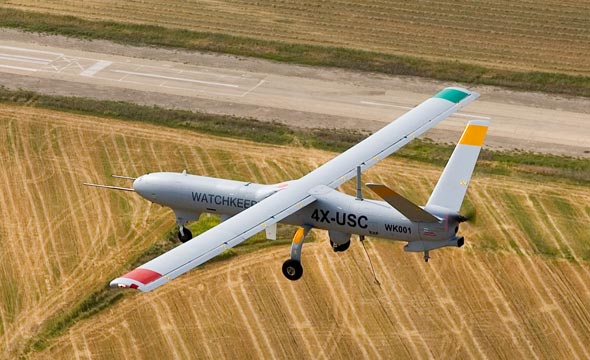
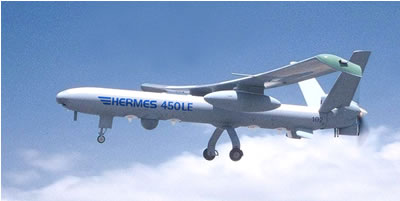
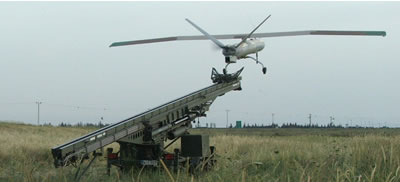

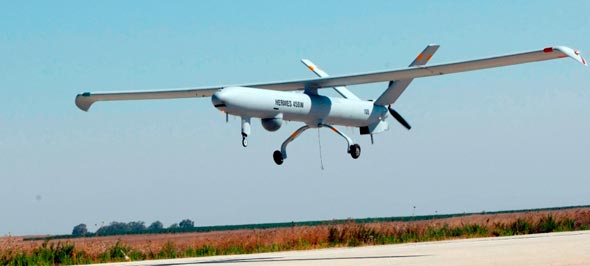
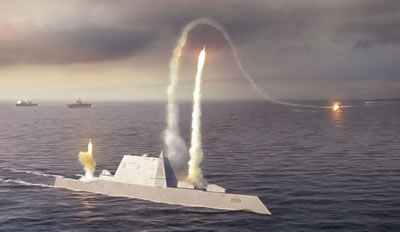

 According to the local press, IDF Northern Territorial Command intelligence estimates are based on the assumptions, that while Syria’s military threat has not changed substantially, a limited military act could become feasible if the situation will warrant such a move. As far as is known, the Israeli intelligence community does not have information pointing to clear intentions on the part of Syrian President Bashar Assad to launch a war. However, there are reports about ongoing preparations which the Syrian army is making for such a contingency in accelerated training, exercises and urgently given top priority to major arms acquisitions, mainly from Russia, Ukraine all funded by an emergency grant from Tehran. Intelligence researchers are finding it difficult to formulate a bottom line: whether Assad truly intends to go to war or if he is merely taking measures to be on the safe side, while seeking to exert pressure on Israel to renew peace negotiations at the lowest price tag.
According to the local press, IDF Northern Territorial Command intelligence estimates are based on the assumptions, that while Syria’s military threat has not changed substantially, a limited military act could become feasible if the situation will warrant such a move. As far as is known, the Israeli intelligence community does not have information pointing to clear intentions on the part of Syrian President Bashar Assad to launch a war. However, there are reports about ongoing preparations which the Syrian army is making for such a contingency in accelerated training, exercises and urgently given top priority to major arms acquisitions, mainly from Russia, Ukraine all funded by an emergency grant from Tehran. Intelligence researchers are finding it difficult to formulate a bottom line: whether Assad truly intends to go to war or if he is merely taking measures to be on the safe side, while seeking to exert pressure on Israel to renew peace negotiations at the lowest price tag.
 Based on his perceptions, that last year’s Hezbollah rocket campaign on Israel’s rear was successful, the Syrian president could opt for an opening gambit, by launching a massive Scud attack on Israeli population centers and major strategic targets, (the latter would prove doubtful, as Scud missiles have only limited accuracy, insufficient for precision target strikes). Such a move, having perhaps considerable psychological, but only limited strategic value, would certainly provoke swift and deadly retaliation, with grave consequences on Syria. First of all, it must be remembered, that only a small portion of Hezbollah’s four thousand rockets and missiles caused casualties among Israeli civilians. Even Saddam Hussein’s four week Scud offensive in 1991 affected only a single fatality! Moreover, Israel’s vigilant spy satellites, ELINT and SIGINT monitors, would no doubt give sufficient early warning to place the majority of Israel’s public under well-prepared cover before the actual strike is launched.
Based on his perceptions, that last year’s Hezbollah rocket campaign on Israel’s rear was successful, the Syrian president could opt for an opening gambit, by launching a massive Scud attack on Israeli population centers and major strategic targets, (the latter would prove doubtful, as Scud missiles have only limited accuracy, insufficient for precision target strikes). Such a move, having perhaps considerable psychological, but only limited strategic value, would certainly provoke swift and deadly retaliation, with grave consequences on Syria. First of all, it must be remembered, that only a small portion of Hezbollah’s four thousand rockets and missiles caused casualties among Israeli civilians. Even Saddam Hussein’s four week Scud offensive in 1991 affected only a single fatality! Moreover, Israel’s vigilant spy satellites, ELINT and SIGINT monitors, would no doubt give sufficient early warning to place the majority of Israel’s public under well-prepared cover before the actual strike is launched.


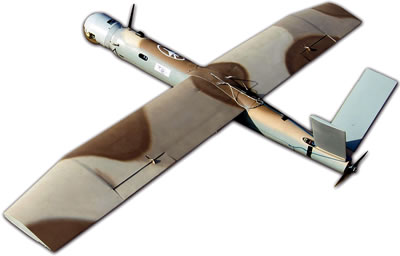

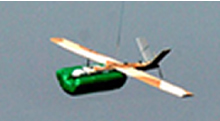

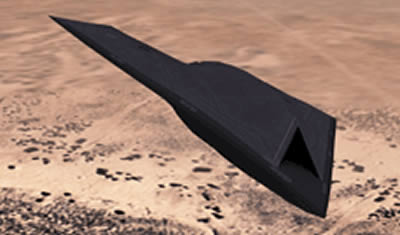
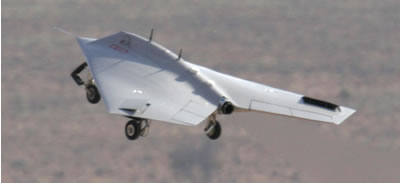

 The system consumes fuel cartridges containing 250cc a mixture of 76% methanol and 33% water. Each cartridge weighs only 12.4 ounces (351 grams) sustaining operation for nine hours. The fuel cell system delivers 25 watts continuous power, at 12V. The system weighs about 2.7 pounds (1.24 kg) and, when activated, runs through a start-up phase of about 20 minutes.
The system consumes fuel cartridges containing 250cc a mixture of 76% methanol and 33% water. Each cartridge weighs only 12.4 ounces (351 grams) sustaining operation for nine hours. The fuel cell system delivers 25 watts continuous power, at 12V. The system weighs about 2.7 pounds (1.24 kg) and, when activated, runs through a start-up phase of about 20 minutes. SFC is developing a wearable fuel cell system called M-25 is currently under development. This system will weigh about 0.9 kg and will be designed to provide sustained 25watts with peaks of up to 80 watts, running at higher efficiency levels (up to 30%) from 300 ml Methanol cartridges. developed offer unique attributes for such missions, including low emissions of noise and heat, making them attractive for covert operations of special forces and deep, intelligence missions. DMFC used in hybrid battery configuration offers significant weight savings compared to batteries. For example, on a 72 hour mission, the DMFC hybrid system offers up to 80% weight comprising a minimal load of batteries and DMFC charger, compared with the full load of rechargeable batteries required for the mission duration.
SFC is developing a wearable fuel cell system called M-25 is currently under development. This system will weigh about 0.9 kg and will be designed to provide sustained 25watts with peaks of up to 80 watts, running at higher efficiency levels (up to 30%) from 300 ml Methanol cartridges. developed offer unique attributes for such missions, including low emissions of noise and heat, making them attractive for covert operations of special forces and deep, intelligence missions. DMFC used in hybrid battery configuration offers significant weight savings compared to batteries. For example, on a 72 hour mission, the DMFC hybrid system offers up to 80% weight comprising a minimal load of batteries and DMFC charger, compared with the full load of rechargeable batteries required for the mission duration.
 QuietOps, both offering a combination of headset, advanced hearing protection Voice Activation radio Transmission (VOX) and programmable control for tactical radio sets. QuietPro, introduced by NACRE is the more established system, that has already been integrated with the Marine Corps’ personnel radio communicators and Special Operations’
QuietOps, both offering a combination of headset, advanced hearing protection Voice Activation radio Transmission (VOX) and programmable control for tactical radio sets. QuietPro, introduced by NACRE is the more established system, that has already been integrated with the Marine Corps’ personnel radio communicators and Special Operations’  Besides using their radios, today’s soldiers are required to operate a number of electronic devices – each with its own functionality and controls all that, without taking hands off the weapon and eyes off the performing task. Thales Australia is developing a rifle input control (RIC) interface, that can be adaptable to various rifles and devices, enabling warfighters to easily control weapon or helmet mounted systems with intuitive commands. The system is based on a patented system invented by Kord Defence. The weapon mounted pushbutton controller provides fast, one-hand and ‘eyes free’ access control of a range of devices directly from the weapon. RIC’s three- or five-button controller can be used to generate ‘chordic’ combinations that could comfortably execute eight different commands such as activating a rangefinder, changing a sight or thermal imager’s field of view , sending a picture or ‘clicking’ a radio by momentarily pressing the ‘transmit’ push to talk button. The device is attaches to the front of the rifle and can be operated by left or right handed users.
Besides using their radios, today’s soldiers are required to operate a number of electronic devices – each with its own functionality and controls all that, without taking hands off the weapon and eyes off the performing task. Thales Australia is developing a rifle input control (RIC) interface, that can be adaptable to various rifles and devices, enabling warfighters to easily control weapon or helmet mounted systems with intuitive commands. The system is based on a patented system invented by Kord Defence. The weapon mounted pushbutton controller provides fast, one-hand and ‘eyes free’ access control of a range of devices directly from the weapon. RIC’s three- or five-button controller can be used to generate ‘chordic’ combinations that could comfortably execute eight different commands such as activating a rangefinder, changing a sight or thermal imager’s field of view , sending a picture or ‘clicking’ a radio by momentarily pressing the ‘transmit’ push to talk button. The device is attaches to the front of the rifle and can be operated by left or right handed users.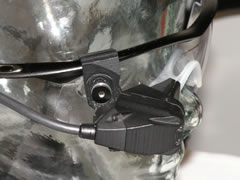


 New versions of Cobham’s
New versions of Cobham’s 

 Hansen’s briefing covered the progress with the various warrior programs, as well as the rapid fielding initiative. Land Warrior kits were modified significantly after the 4/9 test & evaluation. Since the suite is modular, it was redesigned to better match troop’s preference, moving the radio and batteries onto the soldier’s back, while the computer, navigator and controller unit (known as ‘fusion’) is mounted on the side, clearing more space for ammunition and grenades. Such repositioning became possible with the
Hansen’s briefing covered the progress with the various warrior programs, as well as the rapid fielding initiative. Land Warrior kits were modified significantly after the 4/9 test & evaluation. Since the suite is modular, it was redesigned to better match troop’s preference, moving the radio and batteries onto the soldier’s back, while the computer, navigator and controller unit (known as ‘fusion’) is mounted on the side, clearing more space for ammunition and grenades. Such repositioning became possible with the 

 As part of a solution, NATAL the local trauma center, has initiated a “Mobile Unit”, composed of 5 mental health professionals who make home visitations to families in distress. For over seven years now the community of Sderot and those surrounding the Gaza Strip have been forced to contend with ongoing acts of violence and numerous traumas. From the ongoing barrage of Qassam rockets to economic instability, southern residents have faced their own unique crisis’s which has drastically impacted the mental health of thousands. Additionally, many of the residents in the south feel abandon by the state and the general public as terrorist attacks in the center of the country and the Second Lebanon War often times overshadowed the security crisis in the south. With no end of violence in sight, residents have had no choice but to live in a constant state of stress, isolation, uncertainty and fear.
As part of a solution, NATAL the local trauma center, has initiated a “Mobile Unit”, composed of 5 mental health professionals who make home visitations to families in distress. For over seven years now the community of Sderot and those surrounding the Gaza Strip have been forced to contend with ongoing acts of violence and numerous traumas. From the ongoing barrage of Qassam rockets to economic instability, southern residents have faced their own unique crisis’s which has drastically impacted the mental health of thousands. Additionally, many of the residents in the south feel abandon by the state and the general public as terrorist attacks in the center of the country and the Second Lebanon War often times overshadowed the security crisis in the south. With no end of violence in sight, residents have had no choice but to live in a constant state of stress, isolation, uncertainty and fear. Only handful kilometers to the West, a similar tragedy is unfolding in the Gaza Strip. Here children are suffering equally from traumatic symptoms. The street fighting in Gaza, where Hamas and Fatah gunmen are firing indiscriminately at each other, is keeping children cooped up in their squalid homes for days and weeks. It doesn’t take an air strike, or a telephoned warning that Israeli bombers are on the way, to terrify the war-weary children of Gaza. Heightened surveillance is enough to cause nightmares. Incessant shooting, Israeli jetfighter ultra-sound booms and just ordinary noise from firing Qassam and Israeli bombing, are sufficient sources of constant fear. In Gaza’s grim conditions, mothers find it hard to tell if their offspring are crying out of fright, pain or misery. But when normally bickering brats fall silent, it’s the first sign of mental scars from being scared, traumatized and frightened. Post Traumatic Stress Disorder (PTSD) is common here. One survey found almost of a third of Gazan children suffering from a severe form of this condition. These figures make it clear that a typical childhood in Gaza included witnessing or experiencing the violent events associated with this particularly deadly conflict.
Only handful kilometers to the West, a similar tragedy is unfolding in the Gaza Strip. Here children are suffering equally from traumatic symptoms. The street fighting in Gaza, where Hamas and Fatah gunmen are firing indiscriminately at each other, is keeping children cooped up in their squalid homes for days and weeks. It doesn’t take an air strike, or a telephoned warning that Israeli bombers are on the way, to terrify the war-weary children of Gaza. Heightened surveillance is enough to cause nightmares. Incessant shooting, Israeli jetfighter ultra-sound booms and just ordinary noise from firing Qassam and Israeli bombing, are sufficient sources of constant fear. In Gaza’s grim conditions, mothers find it hard to tell if their offspring are crying out of fright, pain or misery. But when normally bickering brats fall silent, it’s the first sign of mental scars from being scared, traumatized and frightened. Post Traumatic Stress Disorder (PTSD) is common here. One survey found almost of a third of Gazan children suffering from a severe form of this condition. These figures make it clear that a typical childhood in Gaza included witnessing or experiencing the violent events associated with this particularly deadly conflict. Understanding the Symptoms of PTSD
Understanding the Symptoms of PTSD

